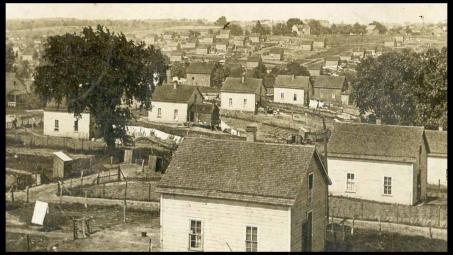Known as Buxton, this Iowa town that used to be touted as “A Black Man’s Town” no longer reflects that description because it no longer exists. But then, when it was still that predominantly black-populated town, it had quite a number of significant stories that need to be told.
For starters, this 20th Century town started by Ben Buxton, who was president and principal stockholder of the Consolidated Coal Company and the North Western Railroad of Chicago, Illinois, boasted as one of the few towns at the time to be a multi-ethnic community.

Of course, the town gained its code-name because of the majority African-Americans numbering about 5000 out of a total population of between eight and ten thousand. The Swedes, Slovaks and Welsh immigrants were the largest European groups in the town but that collective number was nothing close to the outnumbering presence of the African-Americans.
Beginning in the 1890s, Benjamin Buxton sent agents to the southern states to recruit black laborers to work in the coal mines of Iowa following strikes by white miners. After their recruitment, most of these recruits settled in the town of Buxton, founded by the company in 1895 to house the new arrivals. Most of the miners arrived from the Virginia and West Virginia coal mining regions.

Ben Buxton, born in 1867, took over as superintendent of Consolidated Coal Company from his father, John Buxton, in 1896 when he was just 25 years old. He managed the company until 1909.
In 1900, he started building the Buxton community on a piece of land he owned in this southern Iowa town for his new recruits locating it near 10 mines that presented businesses and recreational opportunities for him. While at that, he continued to actively recruit black and immigrant workers.
It was a multi-ethnic community which Buxton ensured that it bonded his workers – a practice he believed would ensure productivity and growth as he treated blacks and whites equally in employment and housing.
It was a clear sense of no overt segregation in Buxton so much that even schools were racially integrated and taught by both black and white teachers.
In 1910, when the company was at its peak, Buxton’s population rose to between eight and ten thousand, with the African-American community dominating the numbers, hence its common name, “A Black Man’s Town.”

E.A. Carter, the son of a black miner who arrived in the town in the 1890s, and a person believed to be Buxton’s most prominent early resident would later become the first black graduate from the University of Iowa Medical College in 1907.
Dr Carter returned to the community to serve, earning an appointment in 1915 by the company as chief surgeon for the company.
By the early 1920s, demands for coal to power locomotives began to make the industry less attractive forcing the Consolidated Coal company to close most of its nearby mines. In a search for more avenues to make a living for themselves due to job losses, gradually, residents left the town and by 1927, Buxton had lost all of its residents.

African Americans born in Buxton remembered having scant knowledge of racial discrimination. A former resident, Sue Williams, remarked, “I never heard the word segregation or knew its meaning until I moved to Chicago.”










